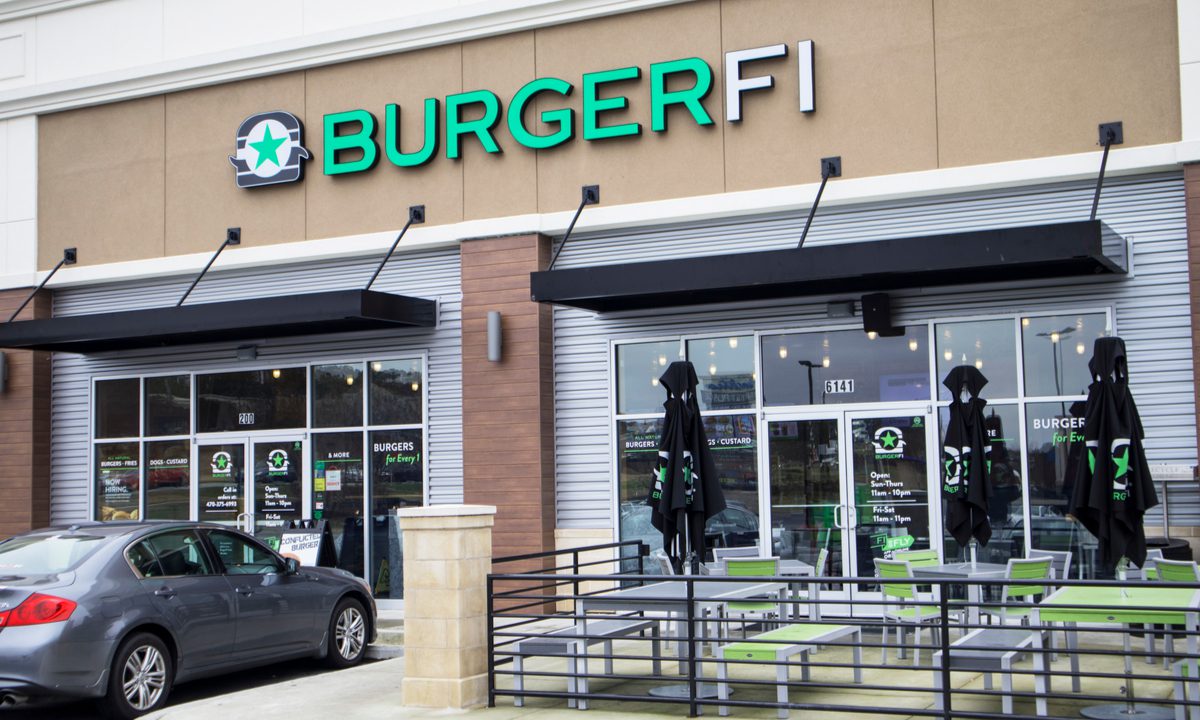Gopuff Expands BurgerFi Partnership to Take on Restaurant Aggregators

As if there were not already enough competition for United States consumers’ restaurant delivery spending, a new player may be coming to the fore to take on DoorDash, Uber Eats and Grubhub.
On Thursday (July 7), digital on-demand convenience delivery service Gopuff announced that it is expanding its partnership with fast-casual brand BurgerFi, which has over 100 locations in the United States and abroad, from a 90-day pilot program in Tallahassee, Florida, to a nationwide rollout. Through the partnership, which kicked off in March, the convenience eTailer prepares BurgerFi foods in its kitchens as any brick-and-mortar restaurant would prepare a licensed virtual brand’s offerings.
Related news: Gopuff, BurgerFi Team on a Pilot Meal Delivery Program
“Having seen how much Gopuff customers in Tallahassee loved accessing BurgerFi for delivery, we look forward to expanding our partnership to bring their delicious, fresh and quality food to more customers in minutes,” Amelia Riba, vice president of kitchens at Gopuff, said in a statement. “With our nationwide infrastructure, trained teams, and control over inventory and cooking prep, we have the ability to truly partner with restaurants like BurgerFi to curate menu and help them reach more customers instantly — without putting added stress on their restaurants for delivery.”
The partnership is somewhat different than the model leveraged by leading restaurant delivery service such as DoorDash and Uber Eats, because Gopuff is providing not just the ordering marketplace and the delivery labor but also the kitchens. Nevertheless, the move places the convenience eTailer in competition with aggregators by positioning it as an option for consumers seeking out restaurant delivery.
Additionally, Riba noted that Gopuff intends to “continue to build out the Fresh Food Hall offering.” If the company adds more virtual locations of name brand restaurants to its platform, the competition with restaurant aggregators could escalate.
Aggregators may continue to struggle with the economics of the delivery model, but among consumers, the demand is there.
Research from the March/April edition of PYMNTS’ Digital Divide series, “The Digital Divide: Regional Variations in U.S. Food Ordering Trends and Digital Adoption, created in collaboration with Paytronix, which drew from a survey of more than 2,500 U.S. adults who regularly purchase food from restaurants, found that about one in three restaurant customers order from delivery aggregators each month.
See also: New Research Shows That Regional Dining Quirks Matter in Tailoring Restaurant Offers
Of the 32% of consumers who do so, the study found that 71% order from DoorDash, 48% from Uber Eats and 41% from Grubhub. After that, there is a steep drop-off, with only 18% of consumers ordering from Postmates and 9% from Seamless.
While it is unlikely that Gopuff would ever be able to shake the big three out of their leadership position in the category, the convenience eTailer certainly has the opportunity to pull ahead of some of the smaller aggregators.
As Gopuff expands its virtual kitchen efforts, it could learn from others in the space, who have found that, in the absence of a physical space to build a connection with customers, it is all the more important to build trust through reliable service and transparent communications.
“The most important thing in the virtual restaurant space is trust, and now you don’t know where your food’s coming from, so you’ve lost that connection or that trust,” Geoff Alexander, president and CEO of Chicago-based Asian-style restaurant brand Wow Bao, told PYMNTS’ Karen Webster in a May interview. “When you’re in the dining room, you can … talk to your guest. You can take care of their needs. You can build relationships. In the virtual dining segment, that doesn’t exist as much, and it’s up to us as operators to find ways to connect and make the guests feel good eating in their house.”
Read more: ‘Dark Kitchen’ Brands Still Need to Focus on Virtual Hospitality
